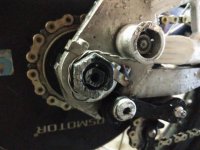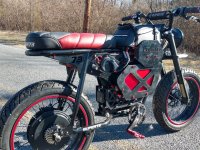jimmyhackers
10 kW
- Joined
- May 11, 2015
- Messages
- 604
was looking for some bolts for my lathe, found this article

 blog.thepipingmart.com
blog.thepipingmart.com
"It is important to note that installation considerations should be taken into account when using either type of bolt. Proper installation requires using a lubricant such as anti-seize on high tensile bolts, while stainless steel bolts require thread sealant or a specific type of washer, depending on the application. Failure to use proper lubricants or thread sealants can cause premature failure due to excessive friction during installation or operation, resulting in stripped threads or broken heads or nuts."
made me wonder, i have a 1000w 48v 9c clone motor running on a 1500w 72v esc.....and i would guess the axle is some sort of high tensile steel and the nut seems to be an electrolized coated steel. common sense says threadlock, but that article hints/points towards lubricant. what should i be using, lubricant or threadlock?
note: im currently not using anything and havnt had any real problems.

High Tensile Bolts vs Stainless Steel Bolts - What's the Difference
Learn about the differences between high tensile bolts and stainless steel bolts, including corrosion resistance, strength, and price.
"It is important to note that installation considerations should be taken into account when using either type of bolt. Proper installation requires using a lubricant such as anti-seize on high tensile bolts, while stainless steel bolts require thread sealant or a specific type of washer, depending on the application. Failure to use proper lubricants or thread sealants can cause premature failure due to excessive friction during installation or operation, resulting in stripped threads or broken heads or nuts."
made me wonder, i have a 1000w 48v 9c clone motor running on a 1500w 72v esc.....and i would guess the axle is some sort of high tensile steel and the nut seems to be an electrolized coated steel. common sense says threadlock, but that article hints/points towards lubricant. what should i be using, lubricant or threadlock?
note: im currently not using anything and havnt had any real problems.





